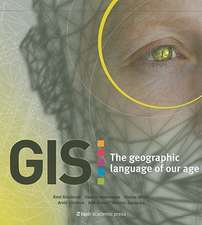Scalable Video On Demand – Adaptive Internet–based Distribution
Autor M Zinken Limba Engleză Hardback – 25 aug 2005
Preț: 777.56 lei
Preț vechi: 854.46 lei
-9% Nou
148.81€ • 153.52$ • 125.94£
Carte tipărită la comandă
Livrare economică 04-18 martie
Specificații
ISBN-10: 047002268X
Pagini: 290
Dimensiuni: 157 x 235 x 21 mm
Greutate: 0.54 kg
Ediția:New.
Editura: Wiley
Locul publicării:Chichester, United Kingdom
Public țintă
By detailing the encoding formats currently under development and the challenges facing large–scale streaming systems, this book will help video engineers and researchers to make decisions on the design of new systems with enhanced capabilities as well as industry and research community: design and software engineers, researchers and developers. Also, a useful resource for postgraduate students following electronic engineering and computer science courses.Cuprins
Notă biografică
Michael Zink is currently a postdoctoral fellow in the Computer Science Department at the University of Massachusetts in Amherst. Before, he worked as a researcher at the Multimedia Communications Lab at Darmstadt University of Technology. He works in the fields of sensor networks and distribution networks for high bandwidth data. Further research interests are in wide-area multimedia distribution for wired and wireless environments and network protocols. He is one of the developers of the KOMSSYS streaming platform. He received his Diploma (MSc) from Darmstadt University of Technology in 1997. From 1997 to 1998 he was employed as guest researcher at the National Institute of Standards and Technology (NIST) in Gaithersburg, MD, where he developed an MPLS testbed. In 2003, he received his PhD degree (Dr.-Ing.) from Darmstadt University of Technology, his thesis was on "Scalable Internet Video-on-Demand Systems".






